Champ Crunch
Posted by: Loren Coleman on July 1st, 2009

One month ago, the Eric Olsen-Lake Champlain phonecam footage of “something” was revealed through YouTube, and first discussed here at Cryptomundo, before it was even mentioned in a couple Vermont & New York newspapers.
Unfortunately, we are no closer today than then to knowing what is shown in the moving images. Clearly, I think, we know what it is not. The traits, shape, and behavior of the “something” does not appear, despite critics of the footage, to match a young moose, a dog, a deer, or even an elk (which are not even found in that location). Nor is it a diver underwater holding up a boot, heard from one clown.

I journeyed over to Lake Champlain last week. Part of my time was spent being recorded by Comcast out of Philadelphia. They interviewed me for forthcoming programs in their series “American Monsters,” to be shown on their “Comcast-On-Demand” cable selection option. I discussed the Lake Champlain Monsters. Following that, I shared info on cryptozoology in general and Bigfoot.
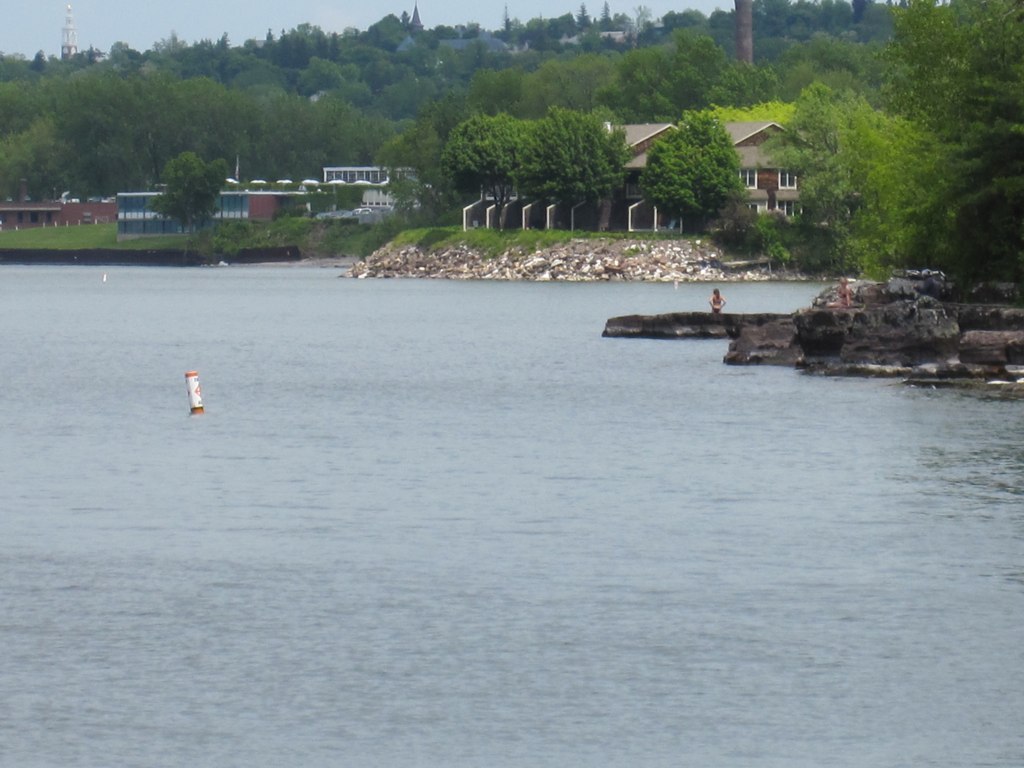
I also explored Oakledge Park on my own and with an associate separately, doing some on-site investigations.
I interviewed park rangers, divers, and other locals about Champ, about Eric Oslen (shown above), and about his footage. Digital photos were taken.
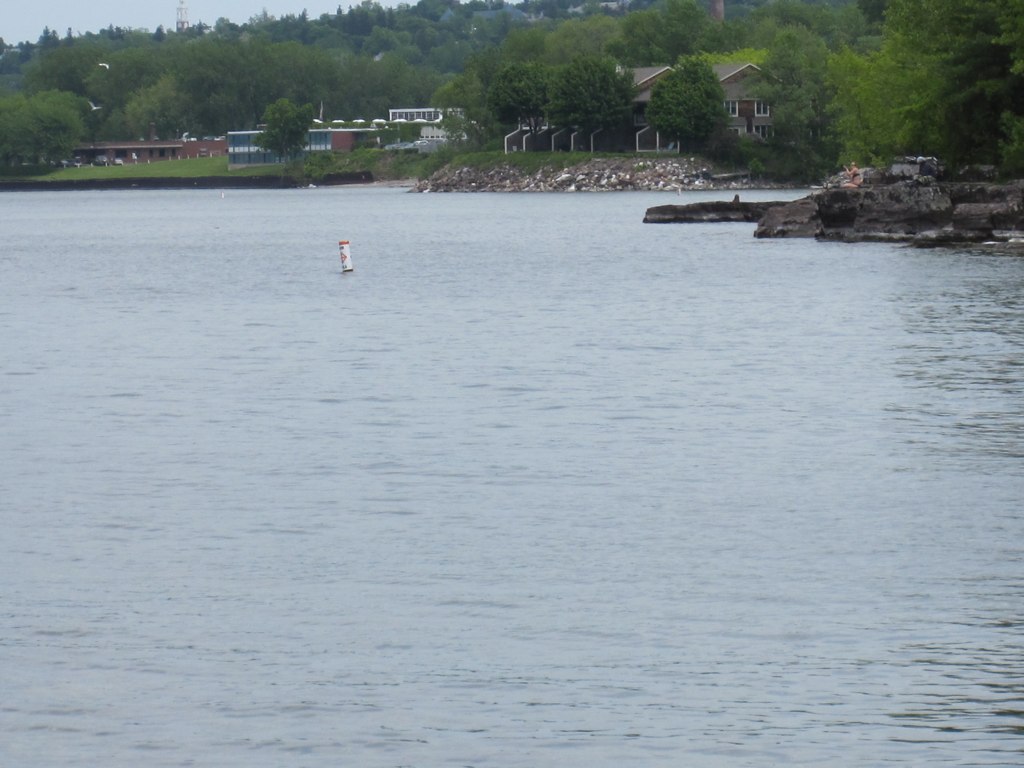
The wind was high, the water was choppy (conditions were unsafe for boating out to the buoys), and conditions were much different than the calm during the day of Olsen’s “filming,” which are reflected in the earlier image above. It was actually not safe around the lake during this week. For me, as it developed, I wasn’t even safe on land, making my assessments of the “filmsite.”
Unfortunately, my time was cut short when I fell on the very ledge where Olsen stood, severely twisting, bruising, and causing small fractures in my right foot. In the language of the street, I broke my darned foot. I remain in pain a week later, and my three middle toes and various spots above & below on my foot now have turned a nice shade of purple, perhaps matching a dinosaur replica or two. (I know, TMI.)
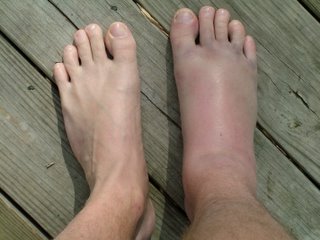
A right broken foot. Not mine, but comparative to how mine looked in the first 48 hours after my crunching encounter in pursuit of Champ; image for illustrative purposes only.
What I did discover were some important variables.
The small city park is on the edge and in Burlington proper, very directly. Just beyond the borders of the park you find yourself right in a densely inhabited residential area. No moose, deer, or even otters are known for that area of the city or in the park.
Any animals which come out onto shore in that area would be regularly seen by the visitors to Oakledge Park – or the nearby residents. Nothing unusual, such as an elk teleported from Montana, have been viewed there, or even moose, baby or otherwise, recently.
Secondly, and significantly, the distance to the buoy and the actual area encompassing this event are much smaller than at first assumed by the footage. Foreshortening appears to be occurring, and what seems to be far away in the footage is closer than it appears.

For reference, recall that the tennis court in this photo is 36 ft x 78 ft. The arrow for the “creature” should be closer to shore.
The following new re-examination of the footage by Al gives a more realistic take on these distances. This YouTube video has not been posted at Cryptomundo before and these new dimensions agree with my fix on the new Olsen footage distances.
I was also able to meet up with “Deep Throat,” who had supplied me with early info on the footage. This individual is Mark Gould, who works in the local media there. Although I had just injured my foot, perhaps in shock, I continued exploring the park after Mark’s arrival.
There has been some confusion about the actual location of the Olsen footage. Along with the rangers, Gould and I were definitely able to determine and confirm that the Olsen ledge is the one at the far end of the park, away from the entrance.
Mark and I took reverse angle photographs from the sight-line from the other side of where the “something” would have been.
Below, the look on my face, no doubt, is from the pain in my foot!
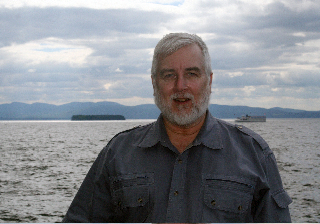

The following stabilized version of the Eric Olsen-obtained video was produced by John Donald Carlucci of Darke Media.
I need to go back to Lake Champlain, again, after my foot heals.
Curses!
For now, the mystery remains, but the answer may be a mundane one.
I’m still not saying I know what was digitally captured by Eric Olsen’s phonecam, but it is not as large as it looks. That it may be an otter remains a real possibility, all joking aside.
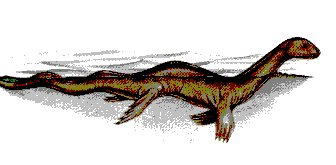
Bernard Heuvelmans’ Super-Otter (above) compared to an image from Eric Olsen’s new footage (below).
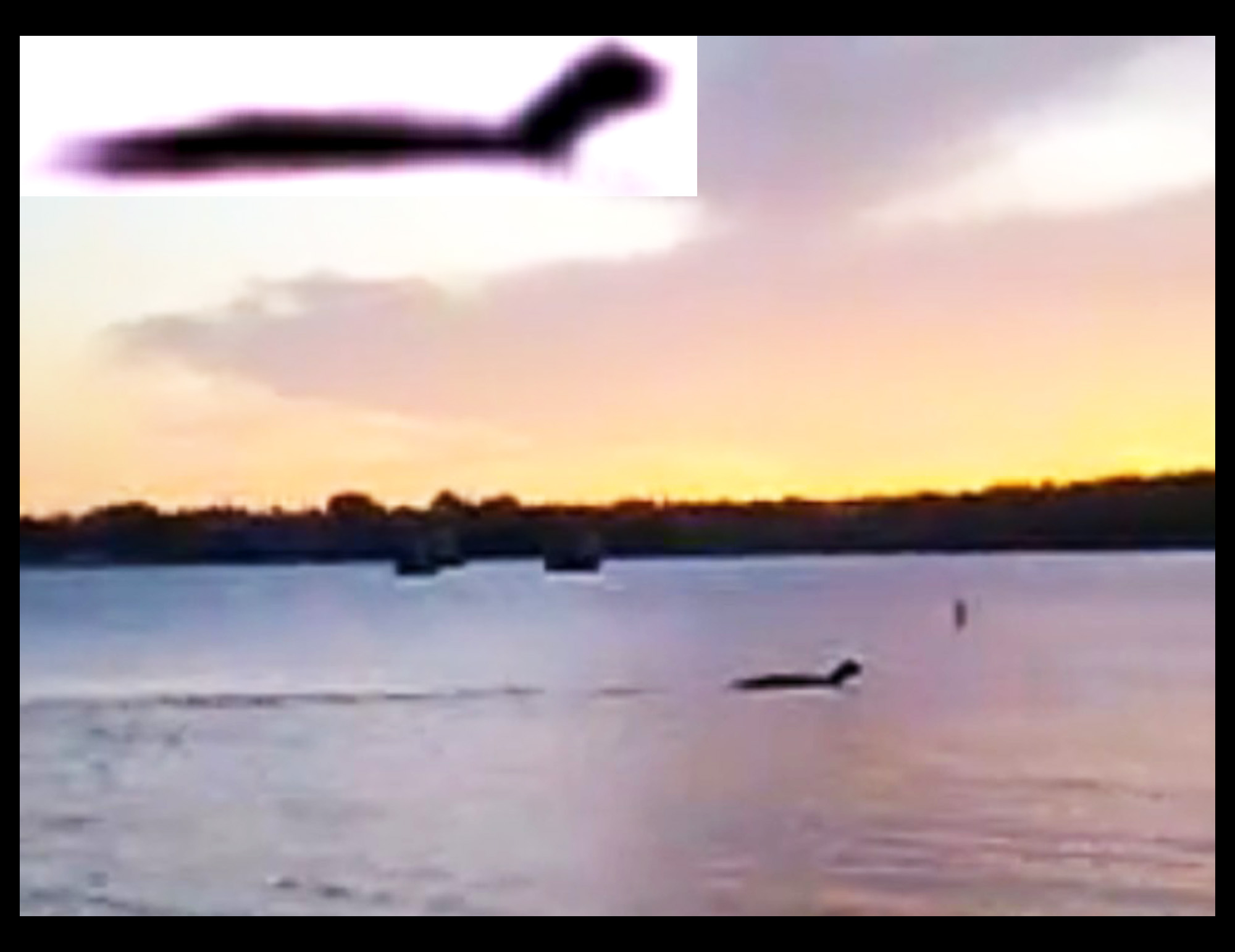

Your assistance is still important in supporting the museum. Please…
Thank You.
Thanks for enhancements and photos from Edward Shephard, Yakcam, Impossible Visits, Sean Viloria, John Donald Carlucci, BoyInTheMachine, Jason Ficks, Sam Hemingway, Mark Gould, during this process, and, of course, Eric Olsen.
About Loren Coleman
Loren Coleman is one of the world’s leading cryptozoologists, some say “the” leading living cryptozoologist. Certainly, he is acknowledged as the current living American researcher and writer who has most popularized cryptozoology in the late 20th and early 21st centuries.
Starting his fieldwork and investigations in 1960, after traveling and trekking extensively in pursuit of cryptozoological mysteries, Coleman began writing to share his experiences in 1969. An honorary member of Ivan T. Sanderson’s Society for the Investigation of the Unexplained in the 1970s, Coleman has been bestowed with similar honorary memberships of the North Idaho College Cryptozoology Club in 1983, and in subsequent years, that of the British Columbia Scientific Cryptozoology Club, CryptoSafari International, and other international organizations. He was also a Life Member and Benefactor of the International Society of Cryptozoology (now-defunct).
Loren Coleman’s daily blog, as a member of the Cryptomundo Team, served as an ongoing avenue of communication for the ever-growing body of cryptozoo news from 2005 through 2013. He returned as an infrequent contributor beginning Halloween week of 2015.
Coleman is the founder in 2003, and current director of the International Cryptozoology Museum in Portland, Maine.



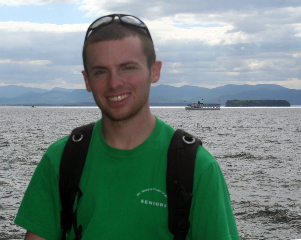

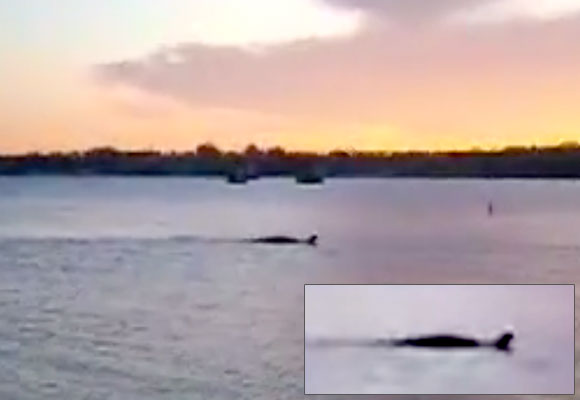
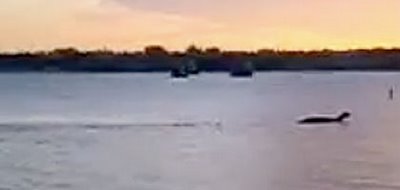
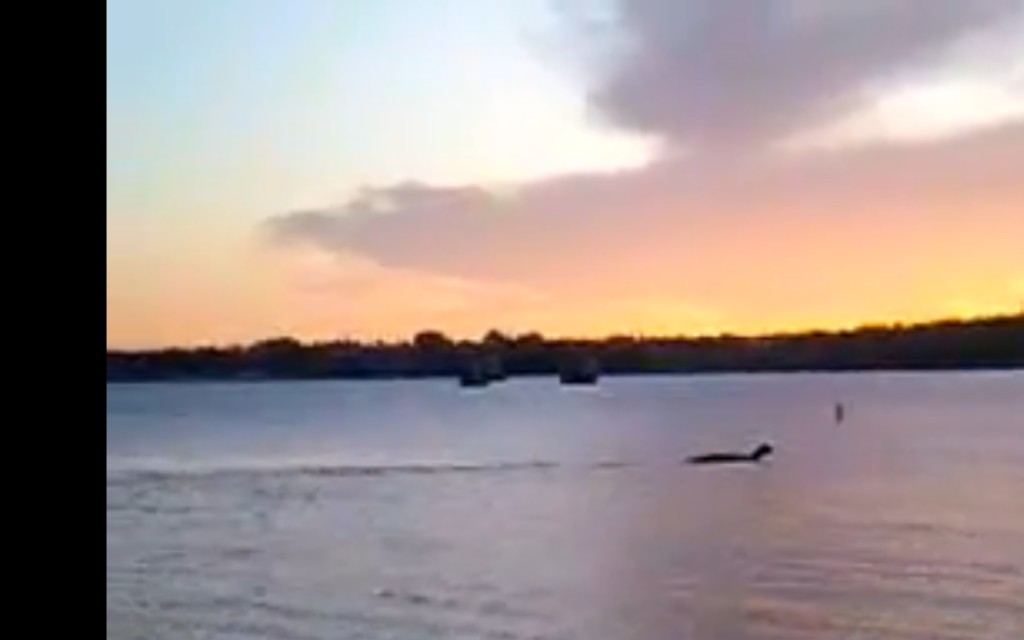
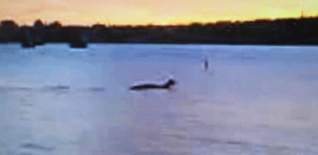
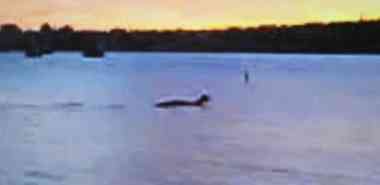


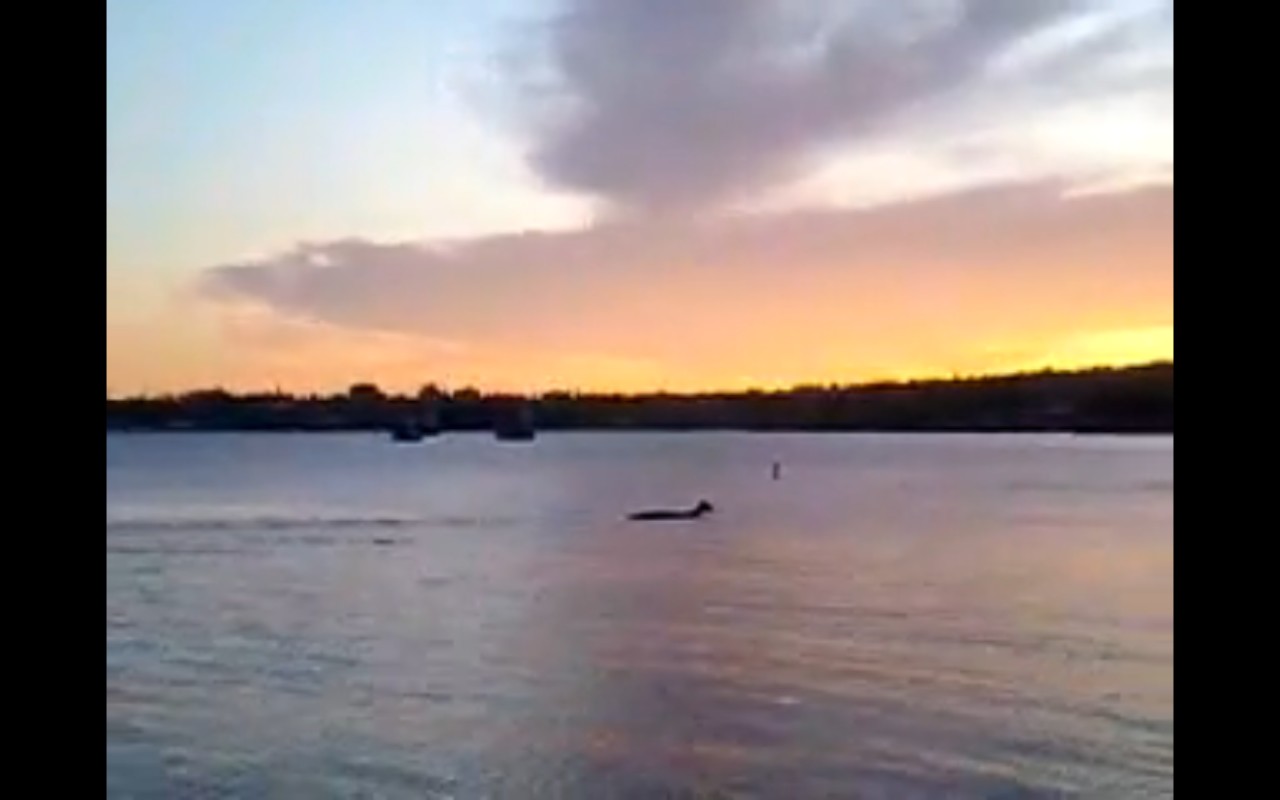
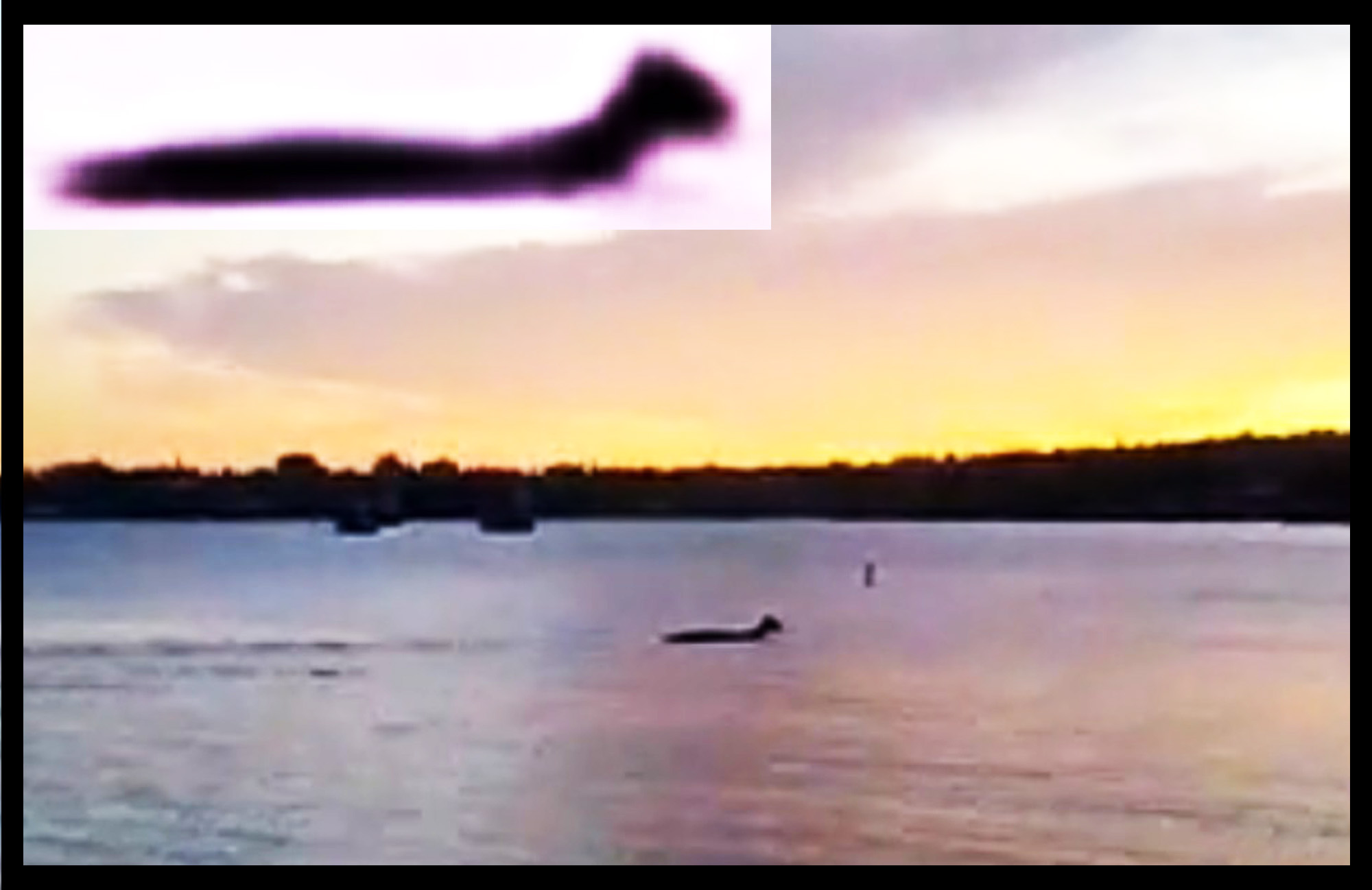









Wuffing, I actually think Olsen was standing right on the point, probably only a foot or so away from the water. When I went to the park last weekend I made sure to look at where the buoy was, as well as the cribs (oil tanks), standing where I thought he was according to all of that. That would put him at almost water level.
My morning is too busy to call the park, but I plan on doing that this afternoon to try to find out how far out that buoy is. We just got back from a trip though and with a three year old, a big dog…well, I’ve been rather busy. :p
Stephanie, thanks to your generous help we are getting the data we need to measure the object.
According to my figures which I made using Photoshop the Olsen object is 5.1 times longer than the buoy is high, in image #0291. It is closer of course so it is smaller in proportion to its % of the buoy distance. The object distance only depends on the camera ht above the water. My last post gave percentages for 10, 9 & 8 ft camera height. You Stephanie tell me he was lower down so 7ft high gives 53%, 6ft high gives 49% and 5ft high gives 44% of buoy range.
The object would then be 81″,75″ or 67″ long if the visible buoy height is 30″. The lower down the camera was, the closer and smaller the object is.
With different buoy height and distance just alter things in proportion.
Okay guys, I just got some pivotal information. I spoke to a woman at the Burlington Parks and Rec, who takes the water samples at that spot of Oakledge Park. She told me that the distance from the point where the video was filmed to that buoy is between 45-50 feet away, 60 tops (but she doubts it’s that far out). She takes her samples from the beach, which is right there but further away from the buoy, and her exact number is 90 feet from the beach to the buoy, but she stressed that where the video was shot was less than 60 feet away from the buoy. (She saw the video too, btw).
The height of the buoy that sticks out of the water is 3 feet. The depth in that spot of the lake is less than 10 feet, and she told me when that video was filmed, the lake was at a low level, so it was closer to 9, maybe 9.5 feet deep right there.
Well, further research I’ve done with the distance the woman from Parks and Recs gave me seems to be wrong. I believe that the buoy is 200 feet from the beach, not 90 like she said, however, I think it’s still 60 feet from the point where the video was filmed to the buoy. I’m using my photographs, a still from the video I took and Google maps that has an accurate scale for distance and have pin pointed where the buoy is.
One picture that I took, I must have been standing in nearly the exact spot as him, with the cribs, buoy and city of Burlington in the background. I also hiked around the other side of the ledges across the inlet to get shots of where he was standing from a distance and made sure to get the buoy in the picture and have used that to estimate where exactly that bugger is.
Stephanie, it is very unusual to find someone who can estimate distances accurately, especially over water. Try to make friends with a golfer who owns a laser rangefinder, and borrow it for an hour. Then measure the distances between everything in all the photos. You are doing very well. Thank you.
Stephanie,
Thanks for your on site information. I tried to determine buoy
location based solely on online info. See my video above ¨Champ Size Calculation¨. Maybe we can settle the buoy distance now!
Can you go to a cliff location and align the buoy visually with the
right side of Jupiter island.
Remember the spot on the cliff. (get a reference point that would stand out on google earth)
Then go to tip of rock outcrop where Olsen was and find a reference
object on the horizon aligned with buoy. (Used blue in video above.)
Then go to google earth.
Draw line (Path line in Google earth) from right side of Jupiter Island to your cliff location.
Draw line between Olsen position and your reference object in distance.
Then use ruler tool to measure where they two lines intersect.
Olsen Position to Intersection of the two lines.
Thanks.
Al
Very cool post.
Al, you may be able to calculate the buoy position from data already in this thread even before Stephanie posts the “cheats”.
If you look at the two hi-res images of bathers on the ledges you will see there is noticeable parallax between the two photos – both horizontal and vertical.
If you identify the obvious landmarks like the foreground buildings, the chimney stack and the University clock tower on a detailed map of the area you should be able to fix the buoy quite easily.
Then Stephanie can tell us whether you are right or wrong!
Where is that photo expert when you need him?